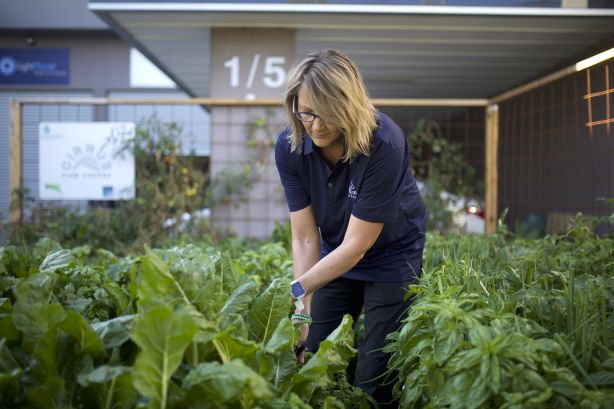There are more interesting articles, commentaries and analyst reports on the Web every week than anyone could read in a month.
Each Saturday morning I like to share some of the ones I’ve read during the week.
The weekend will be over before you know it, so enjoy some weekend reading.
How bad is Australia’s property market?
We’ve seen many conflicting headlines about the current state of our property markets – but is it all really all that bad?
An article from Realestate.com.au explains what we really need to consider before we start panicking.
We are currently in the middle of a housing downturn.
For Australia’s toughest market, Sydney, prices are now down almost 9% from peak and even in Hobart, where prices are still up 5% from last year, the market is starting to slow down.
A combination of tougher finance conditions, a decline in local and overseas investors and a distinct change in sentiment are the key drivers of this change.
Until at least the middle of the year, prices look like they will continue to fall in Sydney and Melbourne.
Despite a lot of negativity in the market, we are not in pricing free-fall as some commentators would have you believe.
Total listing volumes are up as homes take longer to sell, but new listings are down.
Historically in the midst of a significant housing downturn, listing volumes increase sharply as owners are forced to sell and right now we are just not seeing this in Australia.
A strong economy protects us against a housing crash
Overall, the nation’s economic conditions are strong.
Unemployment is particularly low and business investment is up.
Although many of us are not getting the wage rises we would like and we are not spending like we are used to, Australia is certainly not heading into recession.
n every other price crash we have seen, such as the subprime mortgage crisis in the US, thousands and thousands of people were losing their jobs. Yet that’s not happening here.
The real concern is job loss – if you start to notice a lot of your friends and family losing their jobs and feel like yours is also at risk, then it is time to really worry about price falls.
Even global concerns such as the impact of a trade war between the US and China appear to be decreasing.
Jobs and population growth are positive in many areas of the country.
Unlike Perth and Darwin where prices have been driven down by an economic downturn, Sydney and Melbourne are both seeing strong employment conditions.
Beyond the headline numbers of unemployment, office vacancy rates are also at particularly low levels, and in Melbourne, rental demand is strong.
Read the full article here
Now Macquarie calls for cuts
It looks like Macquarie Bank are calling for rate cuts.
This Blog by Pete Wargent looks at what’s going on.
Macquarie doves up
Macquarie Bank now joins the chorus for rate cuts, along with Capital Economics and all the rest.
Financial markets, nek minnit…
How much of a solitary 25bps cut would be passed on by lenders is another question (though cuts often seem to come in pairs).
But either way my hunch is this would still make a difference to consumers after some of the scaremongering ‘soaring rates’ commentary, while bond yields have eased.
Read the full article here
The house of the future: Super-sustainable with room to grow your food
What does the house of the future look like?
According to an article on Domain.com.au it’s all about sustainability and getting back into the garden …
The phrase “house of the future” may, at first, provoke images of cartoon family The Jetsons with sky-high homes, flying cars and robot servants.
But according to the experts, the reality is much more sustainable and green.
And it’s already here.
One display at the upcoming Melbourne International Flower and Garden Show will feature a range of sustainable builders’ ideas and products linked to the house and garden of the future.
Future homes are set to be highly sustainable, have minimal impact on the land and produce enough fresh food to feed several adults over a year, according to participant Brendan Condon.
Mr Condon is director of three sustainability companies including gardening outfit Biofilta, and part of an award-winning deep-green development The Cape at Cape Patterson in South Gippsland.
“We’re showing people can harness design and breakthrough technology that is already being used on houses around the world,” Mr Condon said.
He said sustainability was a must for the future of big cities like Melbourne and Sydney, especially when it comes to living a healthy and comfortable life.
“Suburbia now needs to become the new nature,” he said.
“Cities have huge opportunities to combine rainwater or rooftop rainwater runoff, waste stream organics like composted food waste and surplus city spaces with clever urban farming systems to grow huge amounts of fresh produce.”
Mr Condon said a new gardening system would be launched at the show to demonstrate to people that they could grow food anywhere.
Biofilta recently partnered with a local coffee company to set up pop-up farms in two car spaces in Rocklea Drive, Port Melbourne.
The aim is to grow over 300 kilograms of fresh food in over a year using used coffee grounds and chaff. They have already produced 180 kilograms of food in four month
Mr Condon said there were opportunities to turn urban areas and high-rise blocks into environments for not only food production but also other types of biodiversity.
That included setting up areas of wetlands which would encourage frogs and insects to find a home in urban areas.
More plants offering shading would also help with the urban heat island effect.
As well as food production, the house and garden of the future will also use solar energy and solar batteries to produce more power than they need.
This could power electric cars – even if not actual flying cars promised by The Jetsons.
Director of modular home group Ecoliv Building Ashley Beaumont agreed, saying sustainable home design was now at a point where heating and cooling appliances were minimally used.
Passive solar design – using the sun to heat and cool homes – meant power bills would be massively reduced.
Read the full article here
The RBA doesn’t sound like it’s about to cut interest rates
This week saw interest rates remain the name, as they have since August 2016, and it would seem that things are not changing soon.
An article on Business Insider looks why the RBA is set to keep interest rates the same.
As it has done since August 2016, the Reserve Bank of Australia (RBA) kept Australia’s cash rate unchanged at its March monetary policy meeting.
The decision was widely expected by financial markets.
However, while few expected a move from the bank today, what markets were really interested in was whether it would signal that it’s moving towards cutting interest rates.
While the commentary in the March policy statement was littered with dovish commentary, including an acknowledgement the Australian economy “slowed” in the second half of last year, RBA Governor Philip Lowe provided few hints that the board is considering a near-term reduction in the cash rate.
“The low level of interest rates is continuing to support the Australian economy,” he said, repeating the line that’s been a feature in statements for the best part of a year.
“Taking account of the available information, the Board judged that holding the stance of monetary policy unchanged at this meeting would be consistent with sustainable growth in the economy and achieving the inflation target over time.”
That too was unchanged from the February statement, underpinned by a view that inflation is still expected to lift gradually back towards the RBA’s 2-3% inflation target.
“Further progress in reducing unemployment and having inflation return to target is expected, although this progress is likely to be gradual,” Lowe said.
Ahead of Australia’s Q4 GDP report released on Wednesday, Lowe acknowledged that the economy slowed late last year.
However, crucially, he said the RBA still thinks the economy will grow by 3% this year, keeping it above the trend level of around 2.75% that should help to lower unemployment and lift inflation gradually.
“The central scenario is still for the Australian economy to grow by around 3% this year,” he said.
“The growth outlook is being supported by rising business investment, higher levels of spending on public infrastructure and increased employment.”
The acknowledgement that employment growth was helping to support the economy was an addition to the March statement, even though year-ended growth in hiring has slowed substantially over the past year or so.
“The Australian labour market remains strong,” Lowe said, adding that employment growth had been “significant”.
Read the full article here
Taking a slice of the Happiness Pie
What is the secret to happiness?
This article from Executivestyle.com.au looks at the best tips to find happiness every day.
I have blue eyes, blonde hair (though not as much as I once did), stand 6 foot 3 inches, and look at the world with an optimistic disposition.
My favourite jeans are from Saba.
No doubt my eyes, hair and height can be traced back to my mum and dad, but what about my outlook on life?
Or my taste in jeans, for that matter?
While the genetic nature of our physical characteristics cannot be disputed, it turns out that a proportion (though not all) of our happiness can also be traced back to our DNA.
Research on genetic variance between twins has found as much as 50 per cent of happiness can be linked to our genes.
However, having these genes doesn’t equate to automatic bliss.
Instead, these genes code the traits that predispose people to happiness, and an ‘affective reserve’ that can be called upon during stressful or challenging times.
The Happiness Pie
While you can’t control your genetics (at least, not legally), you do have influence over the remaining pieces of what Dr Sonja Lyubomirsky, a professor of psychology at the University of California, refers to as The Happiness Pie.
Your thoughts and actions account for 40 per cent, with only 10 per cent influenced by outside circumstances such as age and income (and your jeans).
So, while we appear to have a ‘happiness set point’, there is still 50 per cent we can work with.
And even if your life circumstances aren’t that great at present, you’re still left with 40 per cent.
This explains why some people still have high levels of positivity despite having parents who are negative, nullifying naysayers.
And on the flip side, it also shows why someone you may know who has energetic, ebullient and effervescent parents still focuses on everything that can possibly go wrong.
Top five happiness tips
- Stay fit and healthy – it’s hard to be happy if you’re sick and tired
- Pause at the end of each day for a few minutes and reflect on three things that went well
- Plan positive events into the future – the anticipation of joy is a wonderful feeling
- Dedicate time to developing quality relationships – when it comes to happiness, other people matter
- Don’t be afraid of intermittent periods of unhappiness – it’s a normal part of being human*
Read the full article here
Weekend video: Personality Test: What Do You See First and What It Says About You
from Property UpdateProperty Update https://propertyupdate.com.au/weekend-reads-must-read-articles-from-the-last-week-76/











No comments:
Post a Comment